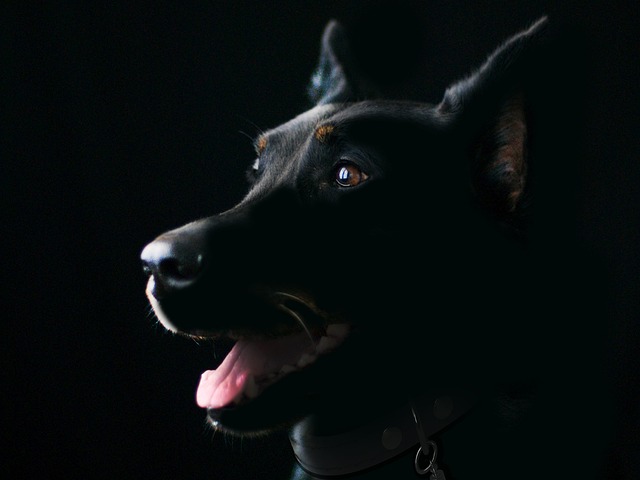Discover what the black dog in trucking means, its dangers for drivers, and how to prevent fatigue-related risks on the road.
You’ve probably heard the phrase “fighting the black dog” before , often associated with depression or deep fatigue. But in the world of trucking, that black dog takes on a slightly different and incredibly serious meaning. For long-haul drivers pushing their limits, the black dog doesn’t bark. It lurks quietly behind the eyes, showing up as micro-sleeps, road hypnosis, and the ever-present danger of falling asleep at the wheel.
When truckers say the black dog was chasing me, they’re not being poetic. They’re describing a very real and frightening experience of fighting to stay awake while driving. The phrase is often used informally between drivers as a shorthand for mental and physical exhaustion.
What You'll Discover:
Where Did the Phrase Originate?
Though Winston Churchill famously referred to his depression as the “black dog,” the term in trucking culture leans more toward fatigue and the creeping threat of microsleep , those unintentional moments of nodding off that can last mere seconds yet have devastating consequences.
Australian road safety campaigns popularized the term in the 1980s, warning long-distance drivers to beware of “the black dog of fatigue.” It struck a chord. It felt visceral, relatable, and dead serious.
What Is Microsleep, and Why Is It So Dangerous?
Microsleep refers to brief, involuntary episodes of unconsciousness that can last anywhere from a fraction of a second to up to 10 seconds. Your eyes may be open. Your hands can still be on the steering wheel. But your brain is checked out.
You seem to have an endless distance of the highway. No curves. No traffic. No music loud enough to jolt your brain back into gear. That’s not just zoning out. That’s the black dog at your heels.
Who Is Most at Risk?
Not all drivers face the black dog equally. Here’s who tends to be in the danger zone:
- New drivers who underestimate how brutal fatigue can be.
- Overloaded schedule truckers trying to squeeze in one last delivery.
- Solo haulers who don’t have a co-driver to share the load.
- Night-shift or rotating shift drivers whose sleep cycles are already off.
- Drivers with untreated sleep apnea or insomnia.
Real-Life Example: A Wake-Up Call
Mark, a 47-year-old driver with over two decades on the road, admitted in an industry forum:
““I remember a rest pulling into the stop and didn’t remember the last 10 miles. I had both hands on the wheel. I was in the lane. But I was out cold. The black dog chased me hard that night, and I was lucky to stop before it caught me.”
Stories like Mark’s are common , and most terrifyingly, they’re told by the lucky ones.
Signs the Black Dog Is Near
Recognizing the signs early can be the difference between life and death. Look out for:
Head Nod Syndrome
That subtle drop of the head before snapping back upright. It may only last a second, but it’s a clear sign.
Highway Hypnosis
You’re awake but don’t recall the last stretch of road. The scenery feels like a blur. It’s like driving on autopilot.
Heavier Eyes
If you’re constantly rubbing your eyes, squinting, or blinking hard to stay alert, your body is trying to shut down.
Wandering Thoughts or Hallucinations
Start seeing things that aren’t there? Lights playing tricks on you? Time to pull over , no second thoughts.
Prevention: Stay Ahead of the Black Dog
This isn’t about drinking more coffee or slapping your face to stay awake. That might buy you five minutes. We’re talking real strategies:
1. Prioritize Quality Sleep
Sleeping in your truck isn’t always ideal, but make it as comfortable and consistent as possible. Invest if necessary in blackout curtains, sleep masks and white noise machines.
2. Schedule Breaks Religiously
The DOT requires rest breaks for a reason. Don’t see them as an inconvenience. See them as survival points.
3. Use Strategic Caffeine
Caffeine is a tool, not a crutch. Use it strategically , early in your shift and in moderation , so it doesn’t backfire later.
4. Stay Cool and Hydrated
Dehydration leads to drowsiness. Crank the AC, splash your face at stops, and sip water often.
5. Power Naps Are Not Weakness
A 15–20 minute nap can restore alertness better than any energy drink.
Modern Tech Fighting the Black Dog
Fatigue Monitoring Systems
Companies are investing in AI-powered cameras that detect facial fatigue signs: drooping eyelids, yawns, and head tilts.
Smart Steering and Lane Drift Warnings
Modern rigs have sensors that beep or buzz if your hands drift or you veer off lane lines , a critical wake-up nudge.
Wearables & Biofeedback
Fitness watches and bio-rings now offer real-time alerts when your heart rate dips into rest mode or when reaction times slow.
Company Culture: A Hidden Enemy?
Let’s talk uncomfortable truths: some trucking companies still push drivers to the edge. “Just one more delivery.” “We need you to double-back.” “Rest later.” If that’s the culture, the black dog is sitting in the passenger seat.
A truly responsible company values driver safety over short-term profit. If you’re a company owner or manager reading this: build systems that reward rest , not just delivery speed.
What Should You Do If the Black Dog Strikes Mid-Drive?
Here’s your no-fluff, honest action plan:
- Pull Over Immediately. Don’t negotiate with fatigue. Don’t wait for the next rest stop.
- Communicate. Call your dispatcher and explain. Fatigue isn’t an excuse , it’s a valid safety issue.
- Nap First, Explain Later. Prioritize a 20–30 minute power nap before deciding your next move.
- Reschedule If Needed. Delivering late is inconvenient. Driving drowsy is deadly.
The Psychology Behind the Black Dog
On a deeper level, the black dog also represents mental fatigue and emotional burnout. Many long-haul drivers struggle with isolation, anxiety, depression , all of which can compound physical exhaustion.
If your black dog shows up even when you’re well-rested, it might be time to consider therapy, community support groups, or mental wellness check-ins. Your mind is as much your engine as the rig you’re driving.
Black Dog in Pop Culture and Safety Campaigns
Did you know Australia created a full animated series to warn against trucker fatigue called “Beware the Black Dog”? It became iconic in road safety education.
More recently, social media truckers are reclaiming the phrase , making it part of awareness hashtags like #FightTheBlackDog and #TruckerMentalHealth to bring visibility to an often-silent killer.
Key Takings
- The “black dog” in trucking symbolizes extreme fatigue and microsleep , a major cause of road accidents.
- Microsleep can happen even with eyes open, making it especially dangerous for truckers.
- Drivers should watch for signs like head nodding, hallucinations, and lost time.
- Effective prevention includes quality sleep, scheduled breaks, hydration, and controlled caffeine intake.
- Technology like fatigue sensors and lane drift warnings can offer added protection.
- Company culture should prioritize safety over deadlines.
- Pull over immediately if fatigue strikes , no load is worth your life.
- The black dog also represents mental exhaustion; drivers need emotional support as much as physical rest.





